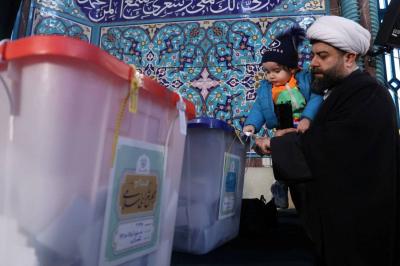The Supreme Leader maintains significant control over all institutions, including the Guardian Council, and as a result, the candidates for the upcoming elections will shape Khamenei's future direction. The Iranian regime may pursue one of two paths: either allow the participation of candidates from various political factions, or limit the elections to candidates affiliated with the hardline faction.
Iran began the candidate registration process for the upcoming presidential election, expected to be held on June 28, following the death of President Ebrahim Raisi in a helicopter crash. Raisi’s death marks the beginning of a new phase for Iran. As the election date approaches, competition for the presidency intensifies. Raisi, who was also one of the most credible candidates to succeed Supreme Leader Ali Khamenei, raises new succession scenarios, as well as the path chosen by the Iranian leader for the coming years.
Iran has announced the election timeline, beginning with a five-day candidate registration period from May 30 to June 3. The Guardian Council, responsible for overseeing the elections, will assess the eligibility and qualifications of the presidential candidates from June 4 to June 10. On June 11, the names of candidates for the 14th presidential election will be published. The final deadline for announcing the candidates is from June 12 to June 26, with voting scheduled for July 28. Following the announcement of results, the new president’s term will commence in July 2024 and continue until 2028.
Despite speculation regarding potential candidates and the circulation of names of individuals who have declared their intention to run and others who have not yet announced, it is necessary to wait for the Guardian Council to announce the accepted names for the election. The Guardian Council is crucial, comprising 12 members, half appointed by the Supreme Leader and the other half by the head of the judiciary. It is this body that has the authority to examine and evaluate candidates for parliamentary and presidential elections, as well as to nullify parliamentary decisions.
The Supreme Leader retains substantial control over all institutions, including the Guardian Council, meaning that the candidates for the elections will define the directions of Khamenei's agenda in the near future. The Iranian regime may choose to either make room for various political faction candidates or restrict the elections to hardline candidates. If the regime attempts to allow a few reformist candidates, it may be aiming to absorb internal tensions among citizens and encourage participation in voting to mitigate ongoing domestic anger that has intensified during Raisi's presidency, and secondly, to maintain its image before the international community.
If the scenario repeats itself like in the 2021 presidential election or the previous parliamentary election in 2024, we will likely see a government and president similar to Raisi’s administration. There is a consensus that Iranian foreign policy will not change following Raisi’s death, as it is tied to the Supreme Leader's authority; hence, the Iranian policy, particularly regarding regional issues, relations with militias, and orientation towards the East, will likely remain the same.
The appointment of Ali Bagheri Kani as Foreign Minister, succeeding Amir Hossein Abdollahian, signals continuity, as he belongs to the conservative faction and previously managed the presidential campaign of Saeed Jalili, a former chief nuclear negotiator during Ahmadinejad’s term, which failed to achieve any agreements between Iran and the West, and he criticized the 2025 nuclear agreement.
Amid this transitional phase in Iran, the European troika has taken a hardline stance towards Tehran, with the intention of the United Kingdom, France, and Germany to present a resolution against Iran before the upcoming meeting of the International Atomic Energy Agency's Board of Governors, despite Washington's opposition, either due to being in indirect talks with Iran through Oman or because it may provoke Iran through the Revolutionary Guard to escalate regional tensions.
Interestingly, the roles have reversed; while Washington had previously intended to present a similar resolution and was dissuaded by European countries, the opposite is happening now. The division of roles between the European troika and Washington may relate to exerting pressure on Iran to finalize an agreement with the West regarding the nuclear issue for two reasons: first, that Iran take this factor into account when choosing the new government and nuclear negotiating team, and second, due to the impending expiration of the "snapback" mechanism in October 2025, which is part of the 2015 nuclear deal allowing signatory countries to formally complain to the Security Council concerning Iran's violations and subsequently reimpose UN sanctions.
These sanctions were previously imposed under earlier Security Council resolutions concerning Iran in 2006, 2007, 2008, and 2010, in addition to the reimposition of sanctions after the completion of the 2015 nuclear agreement. This would involve reimposing sanctions on exports, travel bans, asset freezes, and other restrictions on individuals, entities, and banks involved in certain Iranian nuclear and missile activities. The European governments may incorporate these classifications into their laws, resulting in a ban on most Iranian nuclear activities, including those allowed under the Joint Comprehensive Plan of Action.




